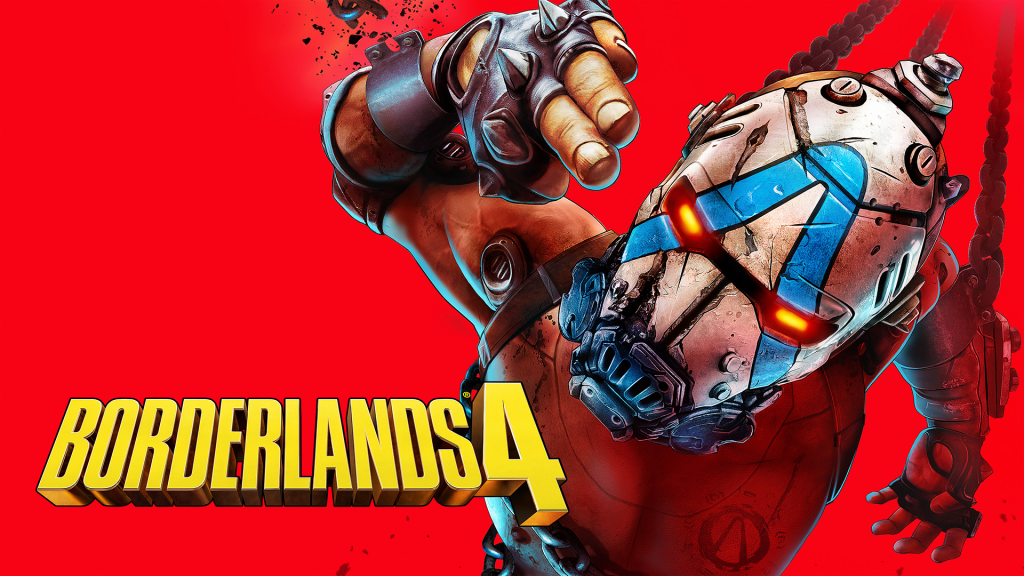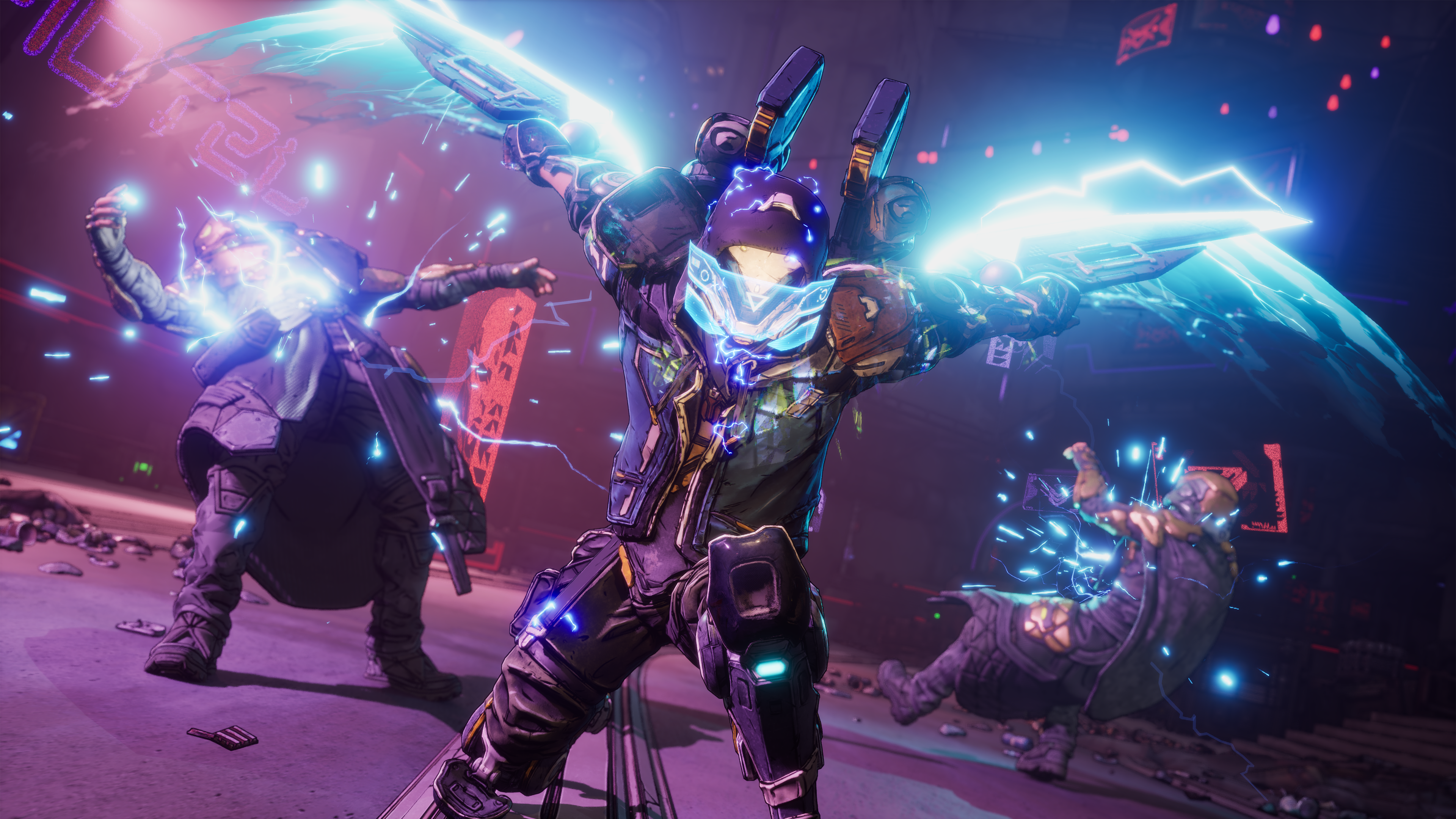Review: Borderlands 4

Introduction
I have been having a blast with Borderlands 4. It is the snappiest the series has felt for me, and my ‘one more run’ keeps turning into an hour with friends.
Game Information
- Title: Borderlands 4
- Developer: Gearbox Software
- Publisher: 2K
- Genre: Co-op looter-shooter (FPS)
- Platforms: PC (Windows), PlayStation 5, Xbox Series X|S
- Age rating: ESRB M
- Official listing and rating: IGDB page
Initial Impression
As a longtime Borderlands player, this clicks: punchier weapons, clearer feedback in fights, and smoother co-op loops. It feels familiar in the right ways, tuned for 2025.
Context
If you bounced off Borderlands 3’s pacing or humor, BL4 trims some friction and sharpens encounter flow. The tone remains Borderlands, and that will always be subjective.
Gameplay
Core Mechanics

Snappy movement and aiming are key. Menus benefit from cleaner loadouts and sortable stats; co-op pinging and map clarity reduce friction.
Difficulty and Pacing
Encounters escalate with elites and boss mechanics that emphasize positioning and cooldown timing. Optional challenges offer higher risk-reward without walling off progression.
Game Depth and Replayability
Endgame loops hinge on build experimentation, target-farm activities, and co-op modifiers. New weapon archetypes and affixes encourage rerolls and alternate playstyles.
Story and Characters
Narrative Summary
A spoiler-free arc focused on a tighter campaign with returning faces and new factions. The tone stays irreverent while mission flow is more streamlined.
Character Development
Vault Hunters feature clearer class identities and cross-tree synergies. Companion and vendor dialogue helps sell the world without overstaying.
World-Building
Hub areas and biomes support traversal variety and encounter diversity. Side quest chains flesh out factions and loot tables.
Narrative Delivery
Cutscenes and in-mission banter land more consistently, with improved subtitle timing and dialog mixing.
Graphics and Visuals
Compared to Borderlands 3
BL4 pushes denser effects and sharper silhouettes to keep firefights readable. Materials and lighting feel more consistent, while UI contrast and encounter layout reduce visual clutter versus BL3-though chaotic scenes can still get busy in four-player co-op.
Art Style and Direction

Stylized cel-shaded art evolves with denser effects and cleaner silhouettes for high-clarity firefights.
Technical Performance
Targets stable frame pacing with scalable settings for CPU/GPU balance.
Immersion
Environmental storytelling and VFX help differentiate factions and weapon families in the heat of battle.
Audio and Sound Design
Music
Combat tracks punch without masking key cues; exploration themes give biomes identity.
Sound Effects
Weapon audio communicates archetype and impact clearly; hit feedback and shield/armor cues improve situational awareness.
Voice Acting
Performances sell the humor and stakes; cleaner mixing improves line readability during firefights.
Final Assessment
Overall Verdict
I am happy to keep playing BL4 and chasing builds with friends. Gunplay feels great, the co-op loop is sticky, and the endgame hooks look promising. I also understand why some may not vibe with it: the humor and high-contrast presentation will never be for everyone, and long-term balance will evolve with patches.
Pros
- Punchy gunfeel and readable combat once you tune settings
- Flexible buildcraft; satisfying co-op loop and target-farming
- Cleaner UI than past entries; better encounter pacing
- Strong art direction and audio identity
Cons
- Humor and tone remain subjective; not everyone will click with it
- Busy visuals and UI density can overwhelm in chaotic fights
- Endgame variety will depend on post-launch updates and tuning
Recommendation
Recommended if you enjoy co-op looter-shooters and buildcraft. If you never liked Borderlands’ tone or meta progression, this probably will not convert you, but it may still be worth a try with friends.
Deep Dive: Gunplay, Buildcraft, and Mission Flow
Borderlands 4 clicks because moment-to-moment combat simply feels better. Weapon swaps are snappier, ADS transitions are clean, and recoil patterns read more clearly when things get hectic. On PC with a high refresh display, the game rewards precision and target prioritization. The headline for me is clarity: silhouettes, hit reactions, and VFX make it easy to parse who is where and what just hit you, even when four players are spamming abilities. That alone makes extended sessions less tiring.
Buildcraft brings the long-tail fun: weapons with distinct archetypes, parts and passives that meaningfully change feel, abilities with short cooldowns that push you to stay aggressive, and a steady stream of gear that gives you micro-goals every session. You can go full glass-cannon with crit stacking and damage-over-time, or bias toward survivability and team utility. Most importantly, you do not need to be in a top 1% meta to feel strong-the game lets you experiment and still progress. The best sessions are when you and your squad discover a synergy you did not plan for and lean into it for the rest of the night.
Mission flow is more streamlined than before. Side content ties in more cleanly, and objective chains keep you moving without excessive backtracking. The campaign is a touch shorter and tighter, which works in the game-s favor because it delivers you to endgame loops without filler. The humor lands more often when jokes punctuate action instead of pausing it. If Borderlands jokes historically were not your thing, that likely will not change here, but the pacing means the game does not overstay any single bit.
Endgame, Co-op Loop, and Long-Term Hooks
The long-term loop is about target-farming and build iteration. Endgame activities give you reasons to revisit bosses and encounters with modifiers that shake up routines. Difficulty scaling in co-op feels fair; enemies get beefier but not spongey to a frustrating degree, and team play actively matters: staggering abilities, revives on a hair trigger, and weapon loadouts that complement each other turn hard rooms from wipes into highlights you talk about after.
Weekly or seasonal rotations give you excuses to dust off alt builds. The endgame is not reinventing the genre, but it respects your time: clear goals, clear rewards, and fast retries. A huge win is how fast you can get back into action after a failure. Little reductions in friction add up when you are farming with friends for a few hours.
PC Performance: Practical, Tested Advice
PC is where BL4 shines if you are willing to tune. After patches, performance and frame pacing have improved on a wide range of systems, though big effect chains in four-player may still cause spikes. A few practical tips that consistently help:
- Update drivers and the game, then let the game rebuild shaders on first launch after an update. Judging performance before that warmup can be misleading.
- Use exclusive fullscreen if available. With VRR (G-SYNC/FreeSync), cap your frame rate a few frames under your monitor refresh (for 144 Hz, cap around 141) and turn in-game V-Sync off; let VRR handle smoothness.
- Textures love VRAM. For 1440p, 8 GB is workable, 10-12 GB is comfortable. For 4K, 12 GB+ reduces hitch risk when effects spike.
Settings to Change First
| Setting | Why | Change |
|---|---|---|
| Volumetrics / Fog | High GPU cost in big encounters | Drop one step for large gains |
| Shadows | Mixed CPU/GPU load | Keep at High or Medium |
| Screen-space Reflections | GPU heavy; low readability gain | Use Medium |
| Ambient Occlusion | Moderate cost; small clarity gain | Medium/High depending on GPU |
| Motion Blur / Film Grain / Chromatic Aberration | Pure style options | Turn off (clearer image) |
If upscalers are present (DLSS/FSR/XeSS), Quality at 1440p and Balanced at 4K are good starting points on mid-tier GPUs; Native 4K typically requires a higher-end card. VRR with a sensible frame cap remains the biggest win for perceived smoothness.
Visuals and Audio: What Stands Out
Borderlands 4 pushes density without abandoning readability. The stylized look returns, but with cleaner silhouettes, brighter hit reactions, and better material separation. The result is that fights read quickly, which matters when multiple players pop abilities. Audio pulls its weight: weapon sounds communicate archetype and power, reloading is snappy, and enemy tells are audible even with music up. Dialog mixing is cleaner, and subtitle timing is tighter than past entries.
What Could Be Better
Borderlands humor is always going to divide people; some bits land, some do not. Big four-player fights can still get busy enough to lose a target for a second. PC stutter after big patches or driver changes still reappears until shaders settle. Endgame variety is solid for a few weeks at a time, but the game will live or die on how fast and how smartly it gets new modifiers, boss rotations, and gear trims that keep the loot economy healthy.
Verdict After Many Hours
Borderlands 4 is the most fun I have had with the series since the early days. It respects your time, plays to co-op strengths, and is willing to be loud and stylish without losing the thread of the fight. I am still playing, still experimenting with builds, and still hopping into voice chat for -one more run.- If you love co-op looter-shooters, this is an easy recommendation. If the series tone never clicked for you, the improved pacing and readability might at least make it easier to enjoy for the gameplay alone.
